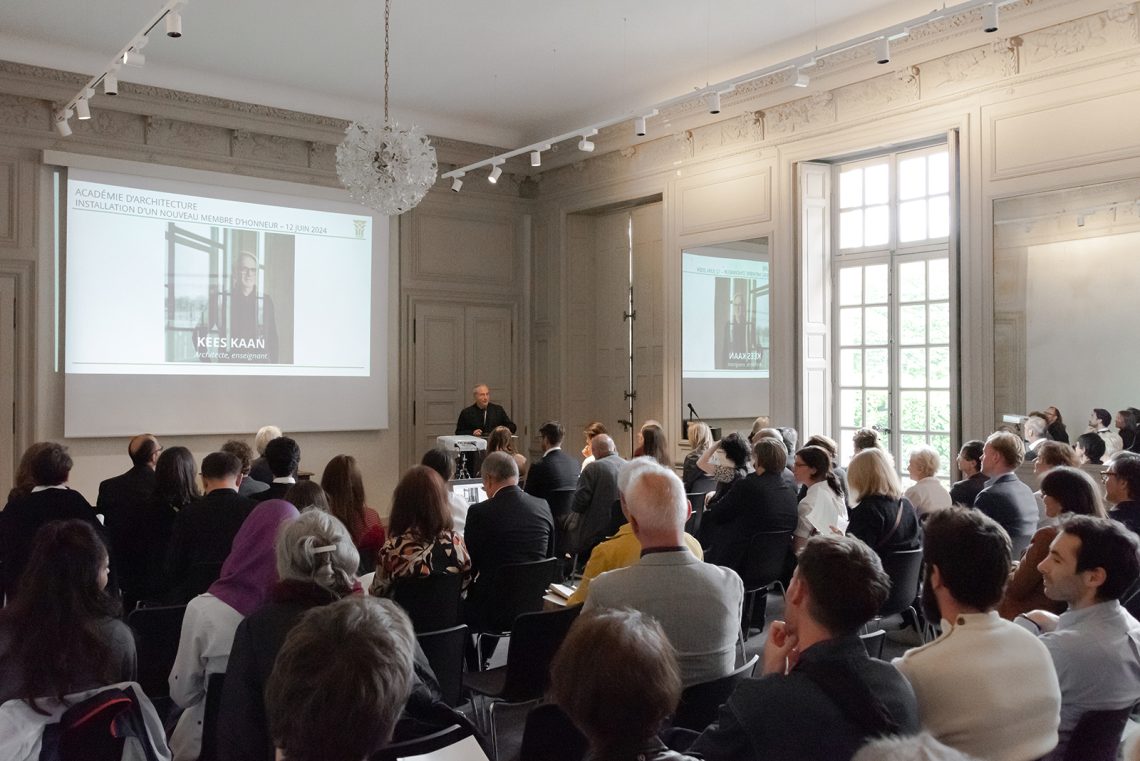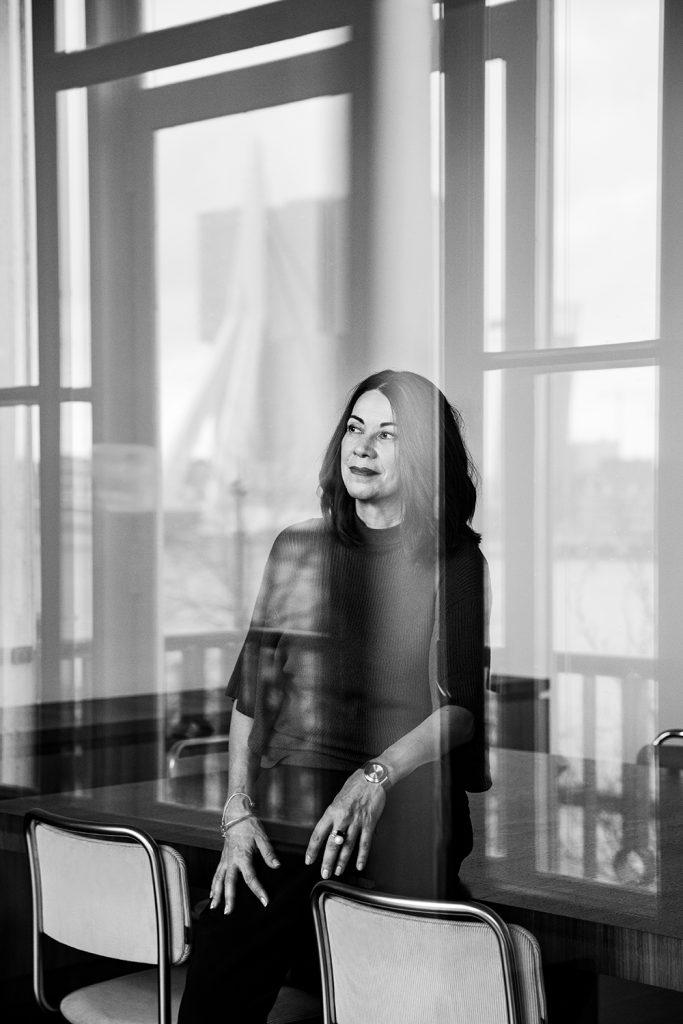03/06 2022
A year of MINUTES – Making of KAAN
To mark a year since we launched our MINUTES short film series we talked to Martina Margini, the initiator and curator of this unique project at the intersection of architecture and cinema. In a personal essay titled 'Dust Motes Dancing in the Sunbeams', Martina describes her fascination with moving images, the beauty of the unseen and the need for new ways of communicating architecture. Read more in the latest 'Making of KAAN' edition below!

Dust Motes Dancing in the Sunbeams
I’m not an architect, but I’ve always been attracted to the built environment: the spaces we occupy, what they represent and how we represent them.
Since I joined KAAN Architecten in 2015, I started working on how to illustrate architectural projects. First, I observed how architects describe their buildings, which supports they choose, which language they use and how their narratives come to life. I noticed how a bad presentation could ‘kill’ a well-thought project and how an intelligent presentation could uplift a project designed in just a couple of days.

Behind the scenes of ‘Today’ by Marcel Ijzerman (the real film director and DOP)
Working in communications, my job is to ‘curate’ the way we present the office’s projects to the broader public: journalists, students, clients, collaborators, social media followers, and so on. It’s complex work requiring understanding your audience and choosing an appropriate language and a suitable medium to spread your message. Because of the press standards in the architectural field, we usually follow a uniform procedure to document projects. This is a ready-to-use package that illustrates the projects at their best. Nevertheless, I felt something was missing, and more could be done to dig into the real essence of a building. Playfully, I imagined a situation where the story of the building is not told by the architect but by someone else who brings a very fresh view of the space.

Behind the scenes of ‘Crafted’ in Maputo with director Benitha Vlok and camera assistant Annalet Steenkamp
During the construction period, the organs and blood vessels of a building take shape; you can almost see the heartbeat. To me, visiting a construction site always felt like an intimate moment, like peeking into a pregnant woman’s belly. Once the machines are gone, the structure is free-standing, now free to roam. The creature (building) has its own life and voice. There is something cathartic about the moment a building is completed. Like the ‘passing of the baton’, the architect and the whole construction team offer a building to its users. From a hand-drawn sketch or 3D model representation, the building is now fully operative and gives room to other narrations outside the contractors’ meeting rooms.

‘Crafted’ behind the scenes at local workshops in Maputo
Thanks to my specific role in the company, I have access to most KAAN Architecten’s buildings. I manage press tours, accompany photographers during their photoshoots, and visit construction sites with our clients to plan a press strategy for upcoming buildings. While walking through these spaces, I was surprised about how many elements I could grasp from these buildings that don’t necessarily emerge through our standard press material. The building ‘lives’ its daily routines, it breathes, and people occupy places in an extraordinary way. There are so many stories to tell.
The idea of MINUTES started here.

Erasmus MC Education Centre photoshoot, photo by Fernando Guerra
MINUTES is a way of counting time. It is a standard duration, notes from a meeting, generic and precise at the same time. I thought this name could work well for such an ambitious project. I proposed to launch a series of films. Web and TV series work really well. Series are the product of our times par excellence. Bits of information in a restricted length of time, a story diluted into chapters for better digestion.
MINUTES propose alternative stories about KAAN Architecten buildings. We established a standard set-up for the series, an opening sequence, a clear project identity, and a methodology to approach each movie in a structured way.

Behind the scenes of ‘The Letter H’ by Giulio Squillacciotti
We gave ‘open mic’ to 12 directors from different backgrounds and nationalities to experiment with a selected range of projects. In discussions with them, I always promoted the importance of creating their own vision of the building. The final objective was not to have a documentary of our built portfolio but rather a constellation of stories emerging from personal memories and emotions generated by these spaces.
Fragments of the reality of these buildings are eternalised on film. The buildings aren’t always the centrepieces of narration. Sometimes they serve as settings; other times, we barely see them, which is exactly what I wanted to achieve with MINUTES. Work with evocative images, a sensory experience of space.

Behind the scenes of ‘To become one’ by Romain Loiseau & Tristan Soreau
Our imagination works with images and needs them to operate. Architecture is a constellation of images, but I always thought they lacked the dynamics of how we experience spaces. The vibrating shadows, people’s gossip, the fact that some spaces are dull and others are soothing, dog’s footsteps in an empty space… Films can elevate spaces to places where situations happen.
The adventure of MINUTES was far from being an easy one. In constant conversation with the firm’s partners, I coordinated many directors with brilliant and original ideas while trying to keep the overall project looking like a coherent series. MINUTES touches a vulnerable spot; it is intended as a generous gesture where the architect offers the building to interpretations. It is not very common and, as far as I reckon, this has never been done by other architecture studios, at least not as a full series of movies.
Another significant challenge of MINUTES is offering additional documentation of architectural projects framed at a particular time. For example, I’m thinking about Floating Stillness, which Miguel C. Tavares shot in Lille during the Covid-19 pandemic. We were almost ready to shoot, but then the scenario had to change entirely and adapt to the constraints given by the limited activities in the building and the overall atmosphere of estrangement and loneliness at that moment. On the other hand, when Joana Colomar filmed Utopia, within the walls of a vibrant space filled with the most diverse kind of crowds, she decided to illustrate the building by filming the people occupying the space. Their presence is so significant and gives meaning to the whole architectural project. We can understand the project and how it socially resonates without the need to see the building.
Nowadays, we have the privilege of a fantastic variety of media to capture the essence of a building. Nevertheless, when I’m out of inspiration, I think about the sensibility of Vilhelm Hammershøi, who could evoke the feeling of dust particles dancing in the light that filters through a window with just a still life painting. We all know this precious yet tiny little event. A flat interior space gets inhabited by a small dance originating from the sun. It’s an invitation to discover a story where we thought there was just a dull corner of a building. Life is happening; it’s all about how attentive we are.
– Martina Margini
Explore the MINUTES project here!

‘Dust Motes Dancing in the Sunbeams’ Vilhelm Hammershøi (Støvkornenes dans i solstrålerne, 1900)





























